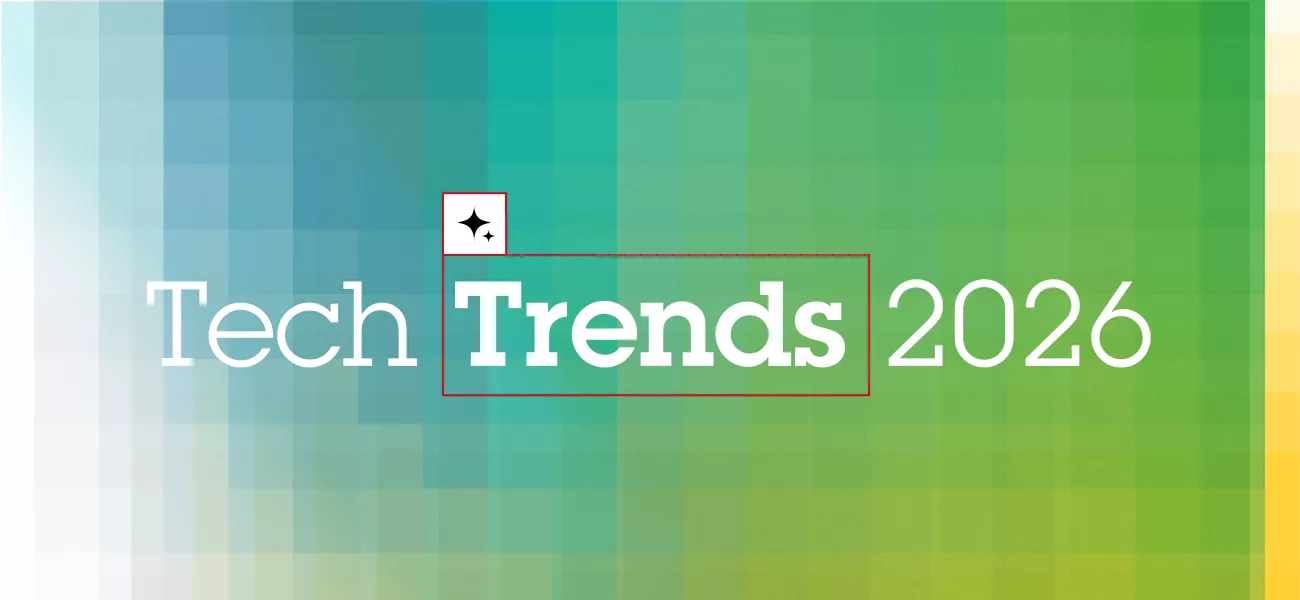
It came as a surprise that this is the 10th time that we’ve looked at the technology trends that we think will affect the security sector in the coming year. It feels like only yesterday that we sat down to write the first – a reminder of how quickly time passes, and how fast technological progress continues to move.
Something that’s also become clear is that a completely new set of trends doesn’t appear year-on-year. Rather, we see an evolution of trends and technological developments, and that’s very much the case as we look towards 2026.
Technological innovations regularly arrive, which impact our sector. Artificial intelligence, advancements in imaging, greater processing capabilities within devices, enhanced communications technologies…these and more have impacted our industry.
Even technologies which still seem a distance away, such as quantum computing, may have some potential implications in the near-term in preparing for the future.
While we focus here on tech trends, it’s worth highlighting a shift that we’ve seen in recent years: the increasing involvement and influence of the IT department over decisions related to security and safety technology. The physical security and IT departments now work in close collaboration, with IT heavily involved in physical security purchasing decisions.
That influence, we feel, is central to the first of our trends for 2026…
1. “Ecosystem-first” becomes an important part of decision making

At a fundamental level, the greater influence of the IT department is changing the perspective regarding security technology purchasing decisions. We call this an “ecosystem-first” approach, and it influences almost every subsequent decision.
Today, however, we start to see a trend that the first decision is increasingly defined by the solution ecosystem to which the customer wants to commit. In many ways, it’s analogous to how IT has always worked: decide on an operating system, and then select compatible hardware and software.
The ecosystem-first approach makes a lot of sense. With today’s solutions including a greater variety of devices, sensors, and analytics than ever before, seamless integration, configuration, management, and scalability is essential. In addition, product lifecycle management, including, critically, ongoing software support, becomes more achievable within a single ecosystem.
Committing to a single ecosystem – one offering breadth and depth in hardware and software from both the principal vendor alongside a vibrant ecosystem of partners – is the primary decision.
2. The ongoing evolution of hybrid architectures

A hybrid architecture as the preferred choice isn’t new. In fact, it’s something we’ve highlighted in previous technology trends posts. But it continues to evolve. Sometimes evolution can seem quite subtle. In reality, we’re seeing some fundamental shifts.
We’ve always described hybrid as a mix of edge computing within cameras, cloud resources, and on-premise servers. While that’s still the same today, what’s changing is the balance of resources, as capabilities are enhanced and new use cases emerge. Edge and cloud are becoming much more significant, with the need for on-premise server computing resources reduced.
This is largely a result of enhanced computing power and capabilities within both cameras and the cloud. More powerful edge AI-enabled surveillance cameras can, put simply, handle more than ever before. Improved image quality, the ability to more accurately analyze scenes and create valuable metadata have seen cameras take on tasks previously handled on the server.
Similarly, with such a wealth of data being created, cloud-based resources have the analytical power required to surface business intelligence and insights to enhance operational effectiveness.
There can still be legitimate reasons to retain some on-premise resources, such as network video recorders, but the true value is increasingly coming from edge devices and cloud resources. Ultimately, it’s a trend that meets both the IT department’s drive for efficiency, the security team’s desire for solution quality and effectiveness, and the data integrity and security needs of both.
But, even if hybrid architectures are a trend, we must not forget that a vast majority of all solutions are still very much on-prem solutions, and this will be the case for a long time.
3. The increased importance of edge computing

In many sectors, like the automotive industry, the need and potential for edge computing has only been recognized relatively recently. As regular readers will know, however, the value of increased computing resources within devices at the edge of the network has been a feature of our technology trends predictions for several years. Enhanced capabilities mark the beginning of a new era of edge.
In many ways, the increased importance of edge computing is directly related to the evolution of hybrid architectures described in the previous trend. When hybrid solutions have included edge, cloud, and server technologies, the full potential of edge AI hasn’t always been fully realized. With on-premise servers able to support some tasks, there has been less motivation to move these to the edge.
This is already changing and will accelerate over the coming year. This is in part due to the enhanced AI available to the edge, within devices themselves. The discussion and decisions about where to deploy AI across surveillance solutions – using the strengths of edge AI in devices and the power of cloud-based analytics – has brought focus to the capabilities of cameras and the increasing variety of edge AI-enabled sensors. These bring benefits in both effectiveness and efficiency.
Edge processing generates both business data — actionable insights derived directly from the scene — and metadata, which describes the objects and scenes within it. This information has become the basis for efficient scaling of system functionality, such as smart video searches, and for generating system wide insights. Edge processing enables a much smoother scaling of system compute performance, as the system performance grows with each added edge device.
The arguments against moving more to the edge, such as cybersecurity challenges, have diminished. With the strong cybersecurity capabilities of edge devices, such as secure boot and signed OS, they now have become a strong part of the overall system security solution.
4. Mobile surveillance on the rise

Mobile surveillance solutions, like mobile trailers, aren’t a trend in themselves. For numerous reasons – commercial and technological – mobile surveillance has already seen significant growth and is set to explode over the next year.
From a technological perspective, improved connectivity has helped unlock the ability to employ more advanced, higher-quality surveillance cameras in mobile solutions. Remote access and edge AI has further enhanced the capabilities of mobile surveillance solutions. This immediately makes them an attractive option in a greater variety of situations, from public safety to construction sites to festivals and sporting events.
Power management within surveillance cameras has also advanced, resulting in lower power utilization without a compromise in quality. This is particularly important where mobile surveillance solutions are making use of battery power and renewable energy. A mobile surveillance solution can also be more straightforward to approve than a permanent installation.
Ultimately, these factors mean that security and safety can be ensured in places where it is difficult or undesirable to place physical security personnel.
5. Technology autonomy: Easier said than done!

Less a new trend, and more a reflection on one of our trends from last year where we highlighted how companies across many sectors were looking to gain more control over key technologies essential to their products. Automotive companies looking to design their own semiconductors to mitigate against supply chain disruption was an example.
As many of those organizations are finding, however, extending an organization’s focus from its traditional business (e.g. making cars) to a fundamentally different and potentially highly complex area (e.g. designing semiconductors) is easier said than done. Attempts also highlight how interconnected global supply chains are, and that true autonomy is impossible to achieve.
As we have done for many years here at Axis, focus for technological autonomy should be on the areas of a business that make a fundamental difference to the offering. Designing our own system-on-chip (SoC), ARTPEC, which Axis started doing more than 25 years ago, has given us ultimate control over our product functionality.
An example of the benefit of this has been our ability to be the first surveillance equipment vendor to provide AV1 video encoding to our customers and partners, in addition to H.264 and H.265.
It also allows us to prepare for future technologies that will bring opportunities and risks, even those that still seem many years in the future.
While we always enjoy putting together our thoughts on the trends that will define the industry over the coming year, our perspective stretches much further into the future. This is what gives us the ability to plan for and develop the innovations that continue to meet the evolving needs of customers, and opportunities to improve safety, security, operational efficiency and business intelligence.
Innovation doesn’t happen in isolation, however. The best ideas emerge through collaboration, by listening to our customers and understanding their challenges, by maintaining close relationships with our partners, and by exploring solutions together. These partnerships are what will continue to drive progress as we move into 2026 and beyond, whichever way the technological winds may blow.


